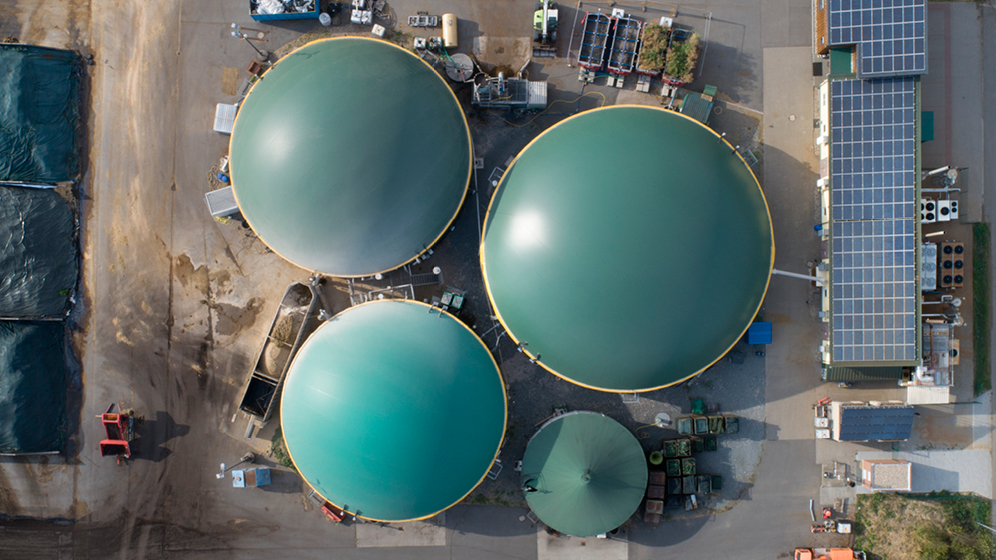Progress on climate policy can feel slow and sometimes acrimonious. However, there is one area most everyone agrees the oil and gas sector can, and must, address: methane emissions.
While progress on climate policy can often feel agonizingly slow and sometimes acrimonious, particularly as it pertains to the energy sector, 2023 ended with the announcement of ambitious proposed policies in both Canada and the U.S. that highlight the one area most everyone agrees the oil and gas sector can, and must, address: methane emissions. As we’ve noted previously, methane is a potent greenhouse gas that has up to 80 times the impact of CO2 when it comes to warming the atmosphere,1 and the oil and gas sector is one of North America’s biggest sources of methane emissions. However, reducing methane emissions is also one of the most cost-effective reduction activities for the industry—so much so that certain abatement strategies can essentially be revenue positive. Methane is a key component of natural gas, so every molecule of methane kept from the atmosphere has an inherent financial value that can be realized.
Industry is keen to point to the success it has had in reducing methane emissions in recent years, and the gains are significant. According to the Canadian Association of Petroleum Producers, between 2012 and 2021, Canadian conventional oil and natural gas producers reduced methane emissions by 34% and emissions intensity by 46%.2 Canada and the U.S. have previously set reduction targets of 40-45% by 2025, and it is looking like those targets may be met—a rare win on the climate front. Canada has built upon this momentum to set a 75% reduction target for 2030, and the draft regulations released late last year are meant to guide the path to that goal.
We have long been vocal in our support for enhanced methane regulations for the industry, having contributed to numerous consultations in Canada and the U.S. over the years. The new proposed regulations will be the most ambitious the industry has seen, and we do feel they could be effective. Our rationale has been consistent and informed by our dialogues with energy companies, namely, reducing methane is the most cost-effective emissions reduction opportunity for the industry, by a longshot.
In general, the carbon emissions reductions demanded of industry by the science, and increasingly by governments, are immense. They require the rapid scaling of technologies that have yet to reach maturity, such as carbon capture, utilization and storage. Meanwhile, the industry has already made huge strides on methane reduction and there is a clear path to the goal, at a manageable cost. A 2023 study by Dunsky Energy + Climate Advisors3 estimates the average cost of meeting the 75% methane reduction target in the Canadian oil and gas industry would be $11/tonne. Weighed against the projected cost of carbon in Canada in 2030 of $170/tonne it is an absolute steal, and dare we say, a no-brainer.
There is, however, a wrinkle. And it is a big one. While the technologies to reduce methane emissions are ready to go, we don’t actually know how much the industry is emitting due to a track record of underreporting. A 2023 study of Alberta-based emissions confirmed this pattern, with researchers finding that actual emissions were 1.5x more than reported emissions, and that major sources of emissions were different than what was captured by industry reporting.4 At the heart of this problem is that industry numbers are created by accounting assumptions—essentially adding up all the equipment managed and multiplying that by standard emission factors. The numerous studies that have contradicted industry numbers are created by direct measurement of emissions. The reason this discrepancy is alarming—aside from the implication that we are underestimating the sector’s impact on global warming—is that the solutions the industry undertakes to reduce its footprint may not be the right ones if they don’t have an accurate assessment of where methane is leaking. This would be an inefficient use of capital and a dangerous distraction from the actions needed.
The solution is better measurement and reporting on methane at the source, something that has been a core part of our engagement with companies in the sector for years. This is where the Oil & Gas Methane Partnership 2.0 (OGMP 2.0) comes in. OGMP 2.0 is a collaboration between the UN, civil society and industry that is focused on driving best practice in methane measurement and management. Companies that sign onto OGMP 2.0 commit to working toward the use of direct measurement technologies to create accurate methane inventories to back ambitious reduction targets.
In 2023 we endeavoured to engage all Canadian oil and gas companies in our portfolio on the topic of joining OGMP 2.0 and expanding their use of direct measurement technologies. We hosted a workshop, wrote letters, and met directly with 30 companies. Many companies have indicated they are assessing the standard and whether they might join. While OGMP 2.0 has the participation of over 100 leading companies globally, not one of them is based in Canada. We hope to change that in 2024.
There is one aspect of the government’s emissions reduction proposal that dovetails with our ask on OGMP 2.0. The government has floated the idea that facilities with continuous, direct measurement technologies in place will be able to forgo certain elements of the draft regulations that require in-person inspections. That means companies that do pursue industry best practices (as exemplified by OGMP 2.0) could realize tangible benefits from a regulatory relief perspective. We see this as a win-win situation and will look to encourage governments and companies to pursue better measurement of methane in order to realize the substantial climate benefits that will come from meeting, and exceeding, our 75% national targets.




